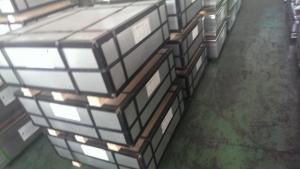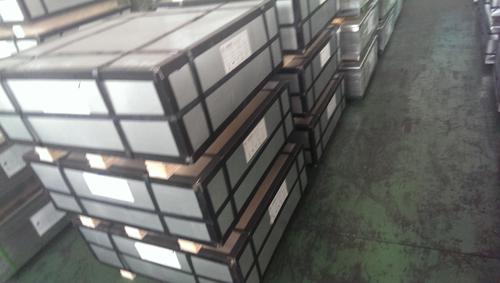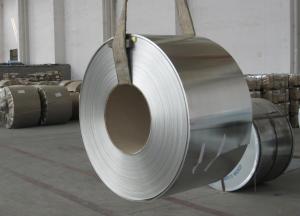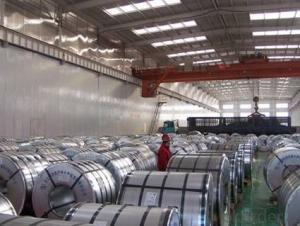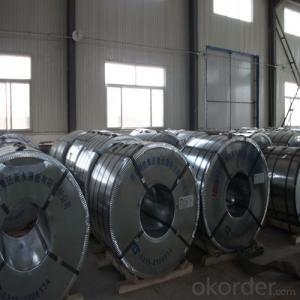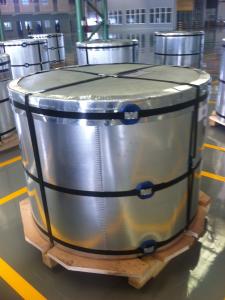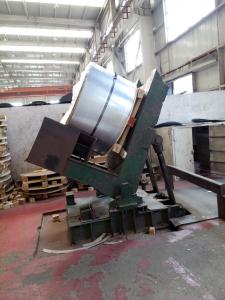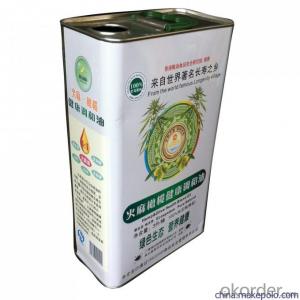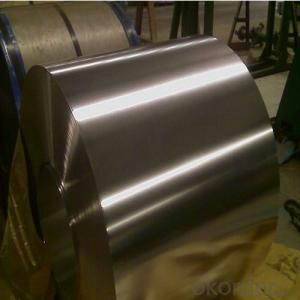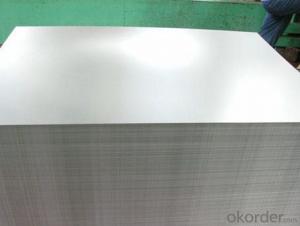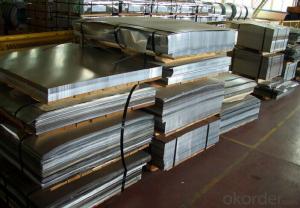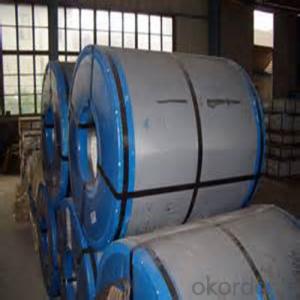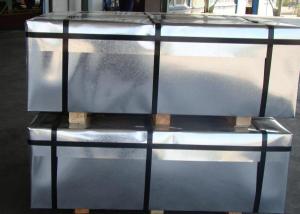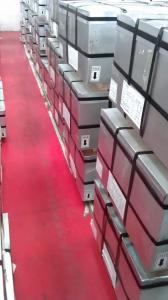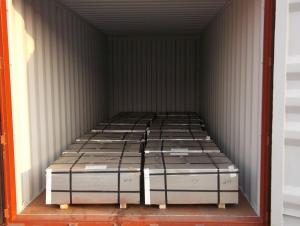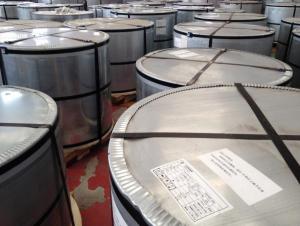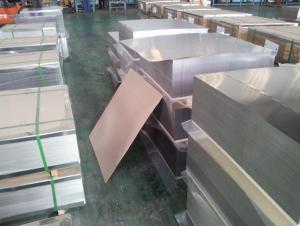Electrolytic Tinplate of Good Quality
- Loading Port:
- China Main Port
- Payment Terms:
- TT OR LC
- Min Order Qty:
- -
- Supply Capability:
- -
OKorder Service Pledge
Quality Product, Order Online Tracking, Timely Delivery
OKorder Financial Service
Credit Rating, Credit Services, Credit Purchasing
You Might Also Like
Standard | JIS G3003,BS EN 10202 |
| Material | MR, SPCC |
Thickness | 0.15-0.50mm |
| Width | 600-1050mm |
| Temper | T1-T5; DR8 |
| Coating | Both Equal and Differential Available |
Surface finish | Bright, Stone, Silver, Matt |
| Oiling | DOS |
| Coil ID | 508 mm |
| Coil weight | 3-10 MT |
| Sheet weight | 1-1.5 MT |
| Weight in one 20’ container | 20-25 MT |
| Packaging | For coils: Anti-rust paper +metal cover +corner protected +wood skid For sheets: Thin plastic film +rust-proof paper +metal cover +metal angles + straps + pallet. Loaded in 20 feet container with max weight 25 tons |
| Application | Metal Container and Mechanical Parts |
- Q: How does tinplate contribute to the overall portability of packaging?
- Tinplate contributes to the overall portability of packaging by being lightweight and durable, making it easy to transport and handle. It also provides excellent protection against external elements such as moisture, light, and air, ensuring the contents remain intact during transit. Additionally, tinplate's compact and stackable nature allows for efficient storage and maximizes space utilization, further enhancing portability.
- Q: What are the advantages of using tinplate?
- Some of the advantages of using tinplate include its high strength and durability, excellent corrosion resistance, and its ability to be easily formed and shaped. Tinplate also provides a barrier against oxygen, moisture, and light, making it ideal for packaging food and beverages. Additionally, tinplate is recyclable, making it a sustainable choice for packaging materials.
- Q: What are the different ways to label tinplate packaging?
- There are several different ways to label tinplate packaging, including using adhesive labels, direct printing, embossing, lithography, and screen printing.
- Q: How does tinplate affect the overall barrier properties of packaging?
- Tinplate enhances the overall barrier properties of packaging by providing a protective layer that effectively prevents the transfer of oxygen, moisture, and light. This barrier helps to preserve the quality, freshness, and shelf life of the packaged product, ensuring its integrity and safety.
- Q: Can tinplate be used for electrical components?
- Yes, tinplate can be used for electrical components. Tinplate is a thin sheet of steel coated with a layer of tin, which provides corrosion resistance and electrical conductivity. It is commonly used in the manufacturing of electrical components such as cans, connectors, and terminals.
- Q: What are the advantages of tin packaging?
- The decoration is exquisite: the metal material has good printing performance; the design trademark is bright and beautiful; the packaging container made by it is noticeable, and it is a kind of good sale packing.
- Q: How does the tin coating affect the weldability of tinplate?
- The tin coating on tinplate actually improves the weldability of the material. It acts as a protective layer, preventing oxidation and minimizing the formation of impurities during the welding process. This results in a stronger and more reliable weld, making tinplate a preferred choice for various applications requiring good weldability.
- Q: What are the limitations of printing on tinplate?
- There are several limitations to printing on tinplate. Firstly, tinplate is a relatively rigid material, making it difficult to print on curved surfaces or complex shapes. Additionally, the smoothness of the tinplate surface can pose challenges for adhesion and ink absorption, which may result in poor print quality or color accuracy. Furthermore, the printing process on tinplate is often limited to a single color or a limited color palette, which can restrict the design options and creativity. Lastly, the durability of the printed design on tinplate may be compromised over time due to exposure to external factors such as moisture, heat, or scratching.
- Q: Can tinplate packaging be used for gift items?
- Yes, tinplate packaging can be used for gift items. Tinplate is a durable and versatile material that can be shaped into various sizes and designs, making it suitable for packaging different types of gifts. Additionally, tinplate packaging offers a unique and attractive appearance, enhancing the overall presentation of the gift.
- Q: Can tinplate be used for packaging beauty and skincare products?
- Yes, tinplate can be used for packaging beauty and skincare products. Tinplate is a commonly used material in the packaging industry due to its durability, corrosion resistance, and ability to protect products from external factors. It is also easily customizable, allowing for attractive and eye-catching designs that can enhance the appeal of beauty and skincare products.
Send your message to us
Electrolytic Tinplate of Good Quality
- Loading Port:
- China Main Port
- Payment Terms:
- TT OR LC
- Min Order Qty:
- -
- Supply Capability:
- -
OKorder Service Pledge
Quality Product, Order Online Tracking, Timely Delivery
OKorder Financial Service
Credit Rating, Credit Services, Credit Purchasing
Similar products
Hot products
Hot Searches
Related keywords
